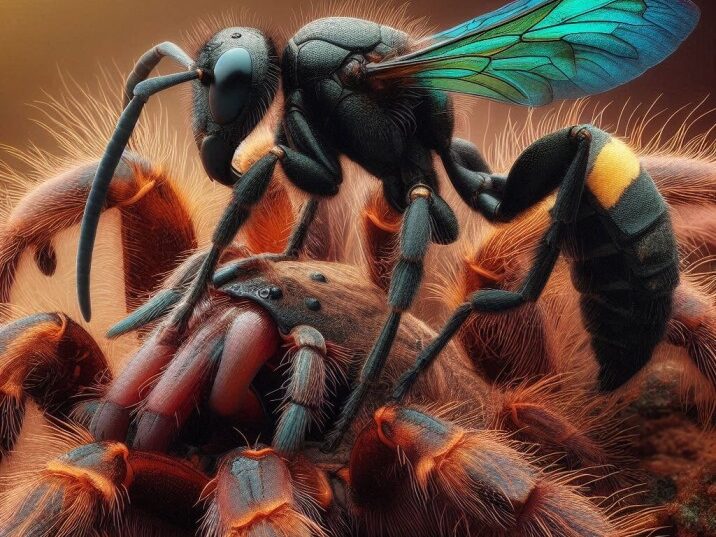Tarantulas, with their hairy legs and intimidating size, are fascinating creatures often portrayed as fierce predators in the wild. But did you know that tarantulas themselves have natural enemies? Understanding the natural predator of a tarantula can provide a better insight into the delicate balance of ecosystems where they thrive. In this article, we will explore the various animals that prey on tarantulas, offering an informative and engaging look at the world of these incredible spiders.
Introduction
Table of Contents
Tarantulas are large, hairy spiders that belong to the Theraphosidae family, consisting of over 1,000 species. These spiders are known for their fearsome appearance and often serve as the stuff of nightmares for many. However, in the wild, tarantulas are not always the top predators. Just like any other animal, they have their own set of natural enemies that threaten their survival.
This article delves into the natural predator of a tarantula, focusing on the animals that have evolved to hunt and consume these formidable spiders. By the end of this piece, you’ll have a deeper understanding of the challenges tarantulas face in the wild, and how they have adapted to survive in a world full of danger.

Table of Information: Natural Predator of a Tarantula
| Predator | Description | How They Hunt |
|---|---|---|
| Tarantula Hawk Wasp | A large, bright-colored wasp that paralyzes tarantulas. | Uses a powerful sting to paralyze the tarantula, then lays eggs on its body. |
| Birds | Various bird species, especially large raptors. | Swoop down and grab the tarantula with sharp talons. |
| Snakes | Predatory snakes that specialize in eating spiders. | Use venom or constriction to subdue the tarantula before swallowing it whole. |
| Mammals | Small mammals like coatis and skunks. | Dig tarantulas out of their burrows and eat them. |
| Other Spiders | Larger or more aggressive spiders. | Overpower or trap the tarantula using webs or direct attack. |
Natural Predator of a Tarantula
There is a following list of natural predator of a tarantula:
1. The Tarantula Hawk Wasp: A Fearsome Foe
What is a Tarantula Hawk Wasp?
The Tarantula Hawk Wasp is perhaps the most famous predator of tarantulas. This large, brightly colored wasp is known for its powerful sting, which is considered one of the most painful in the insect world. Found in regions like the southwestern United States, these wasps have a unique relationship with tarantulas.
How Does the Tarantula Hawk Wasp Hunt?
The Tarantula Hawk Wasp hunts by paralyzing tarantulas with its sting. Once the spider is immobilized, the wasp drags it to a burrow and lays a single egg on its body. When the egg hatches, the larva feeds on the still-living but paralyzed tarantula. This gruesome process ensures the survival of the wasp’s offspring while sealing the tarantula’s fate.
2. Birds: The Sky Hunters
Which Birds Prey on Tarantulas?
Various bird species are known to prey on tarantulas, particularly large raptors like hawks, owls, and eagles. These birds have sharp talons and beaks, making them formidable hunters capable of taking down even the largest tarantulas.
How Do Birds Hunt Tarantulas?
Birds of prey often spot tarantulas from the sky and swoop down to grab them with their talons. They then use their sharp beaks to kill and eat the spider. Some birds may even carry the tarantula back to their nests to feed their young.
3. Snakes: The Slithering Predators
Which Snakes Eat Tarantulas?
Certain snakes, particularly those found in tropical and desert regions, have evolved to hunt and eat tarantulas. These snakes include species like the Mexican black kingsnake and other specialized spider-eating snakes.
How Do Snakes Hunt Tarantulas?
Snakes that hunt tarantulas often rely on stealth and speed. They may surprise the spider by striking quickly and delivering a venomous bite. Some snakes use constriction to subdue the tarantula before swallowing it whole.
4. Mammals: The Opportunistic Predators
Which Mammals Prey on Tarantulas?
Small mammals such as coatis, skunks, and even some species of rats are known to prey on tarantulas. These mammals are opportunistic hunters, meaning they will eat whatever they can find, including spiders.
How Do Mammals Hunt Tarantulas?
Mammals typically hunt tarantulas by digging them out of their burrows or attacking them while they are out in the open. Their sharp claws and teeth allow them to easily overpower the spider and consume it.
5. Other Spiders: Cannibalistic Encounters
Do Spiders Eat Other Spiders?
Yes, some spiders are known to prey on other spiders, including tarantulas. This behavior is known as spider cannibalism, and it occurs in various spider species, particularly in cases where one spider is significantly larger or more aggressive.
How Do Spiders Hunt Tarantulas?
Larger or more aggressive spiders may overpower a tarantula by using their webs to trap them or through direct confrontation. Once the tarantula is subdued, the victorious spider will consume it.
Adaptations of Tarantulas to Survive Predators
While tarantulas have many natural predators, they have also developed various adaptations to help them survive in the wild. These include their venom, hairy bodies, and the ability to create burrows where they can hide from danger.
Venom and Defense Mechanisms
Tarantulas possess venom, which they use primarily to subdue their prey. However, this venom can also be used in self-defense against predators. When threatened, a tarantula may rear up on its hind legs and show its fangs, warning potential attackers to stay away.
Hairy Bodies and Urticating Hairs
The hairs on a tarantula’s body aren’t just for show; they serve a vital purpose in its defense. Some tarantula species have specialized hairs called urticating hairs that they can flick at predators. These hairs are irritating and can cause discomfort to potential threats, giving the tarantula a chance to escape.
Burrows: The Ultimate Hideout
Tarantulas often dig burrows or find crevices to hide in. These burrows provide a safe space where the spider can retreat from predators. The burrow’s entrance is usually well-hidden, making it difficult for predators to find the tarantula.
Conclusion
Tarantulas may seem like invincible creatures, but they face numerous challenges in the wild from natural predators like Tarantula Hawk Wasps, birds, snakes, mammals, and even other spiders. These predators have developed unique strategies to hunt tarantulas, contributing to the complex web of life in which these spiders live.
Understanding the natural predators of tarantulas helps us appreciate the delicate balance of nature and the many ways in which animals have adapted to survive. While tarantulas are formidable in their own right, they are also part of a larger ecosystem where every creature plays a role.
FAQs about Natural Predator of a Tarantula
1. What is the most dangerous predator of a tarantula?
The Tarantula Hawk Wasp is considered one of the most dangerous predators due to its ability to paralyze tarantulas with its sting.
2. Can tarantulas defend themselves against predators?
Yes, tarantulas can use their venom, urticating hairs, and defensive postures to deter predators.
3. Do birds commonly eat tarantulas?
Yes, certain birds of prey, such as hawks and owls, are known to hunt and eat tarantulas.
4. Are there snakes that specialize in eating tarantulas?
Yes, species like the Mexican black kingsnake are known to prey on tarantulas.
5. Do other spiders eat tarantulas?
Yes, some larger or more aggressive spiders may engage in spider cannibalism and prey on tarantulas.

